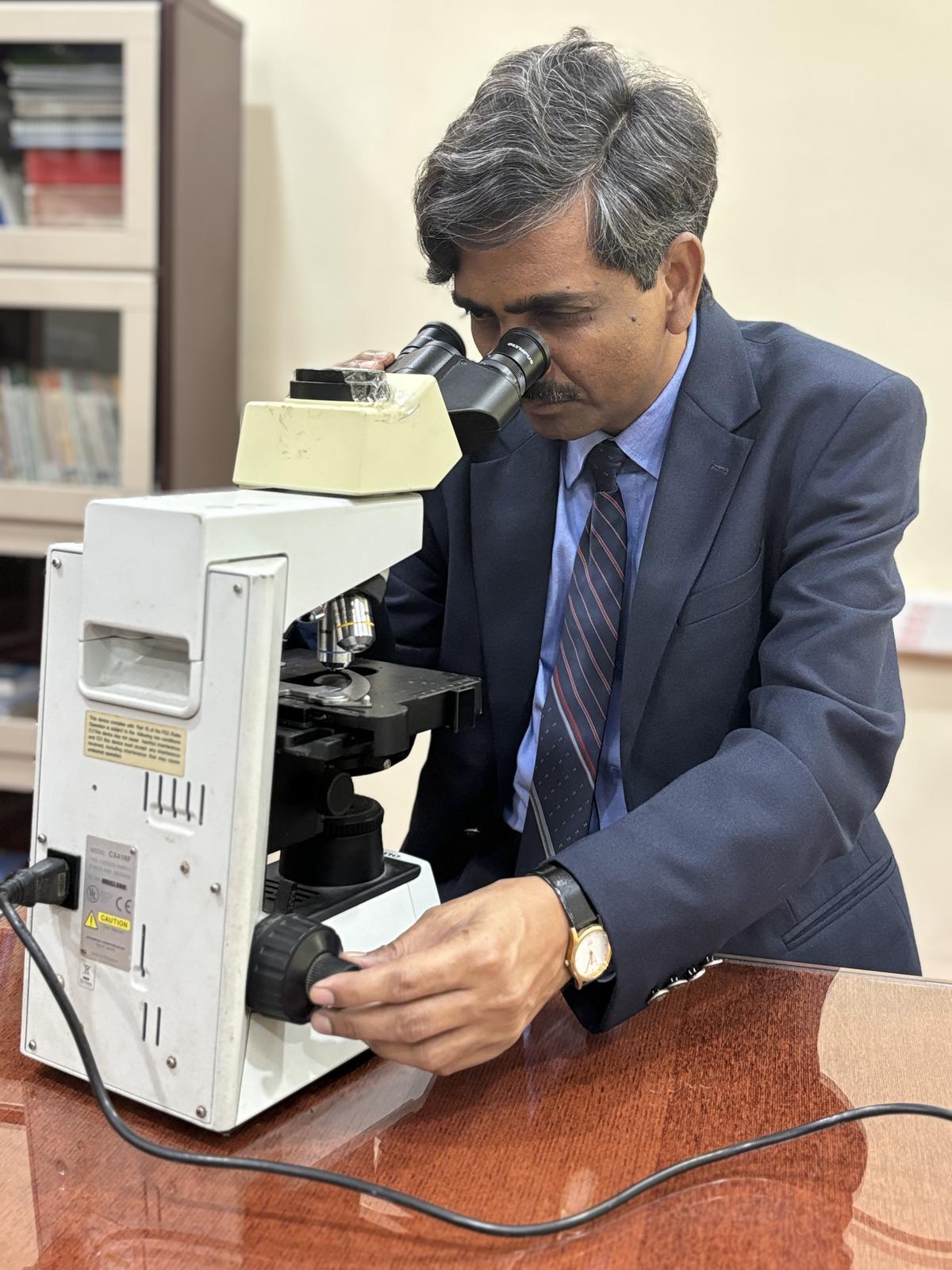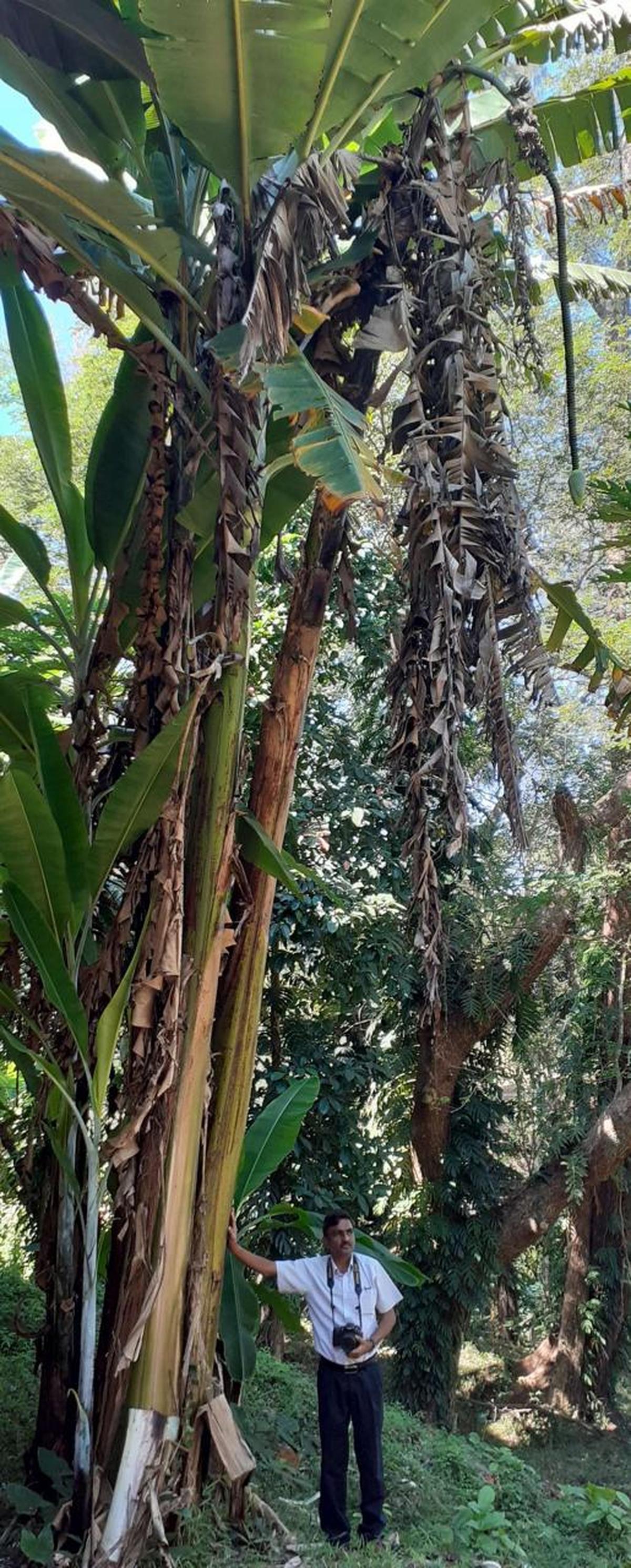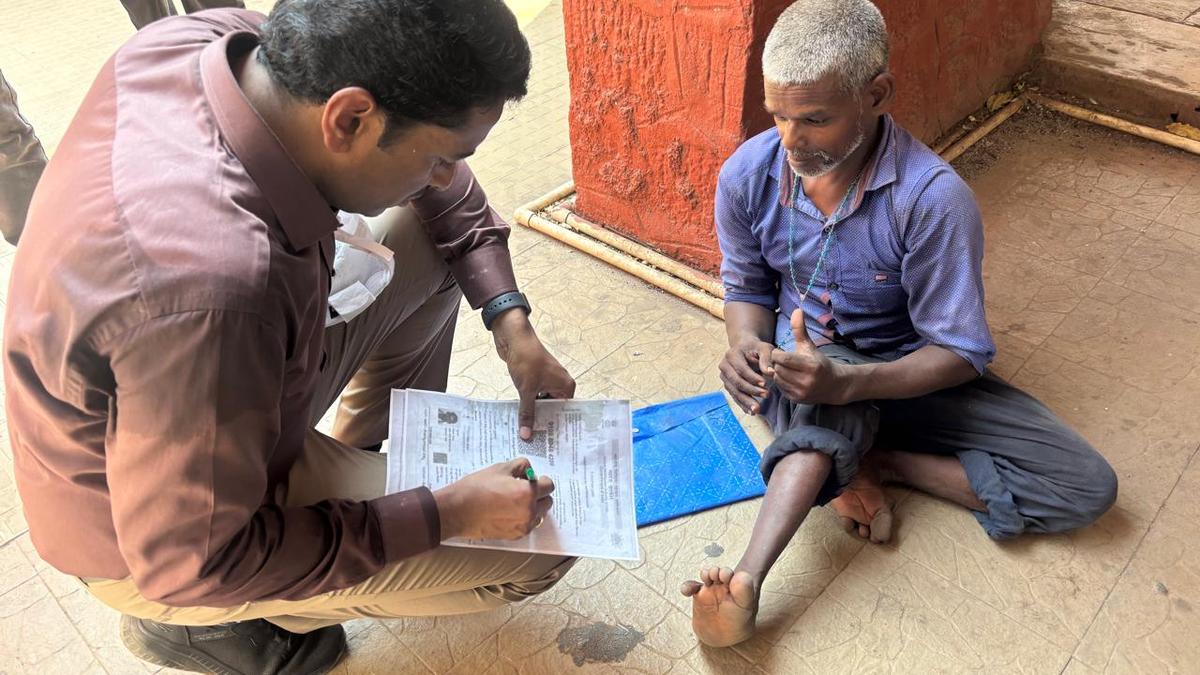
The specimen at the Indian Museum.
| Photo Credit: Special arrangement
An infructescence of about 4.2 metres has been recorded in a species of wild banana from Andaman and Nicobar islands, making it the longest infructescence recorded in bananas across the world. The details of the discovery were published in an international peer reviewed science journal Botany Letters earlier this year.
The infructescence was recorded in an endemic species of wild banana, the Musa indandamanensis, that was first recorded from a remote tropical forest near Krishna Nala reserve forest in the Andaman and Nicobar islands in 2012 and found mention in a science journal in 2014.

Scientist Lal Ji Singh.
| Photo Credit:
Special arrangement
Initially when the species of Musa indandamanensis was discovered in the Little Andaman islands by Lal Ji Singh, head of the regional centre of Botanical Survey of India in the Andaman and Nicobar Island, the infructescence of the specimens were about 3 metres long. Usually, the infructescence ( fruit bunch lux axis) of cultivable species of bananas are about 1 metre long, the scientist said.
A few months ago, Dr Singh and his team came across the species of wild banana in Campbell Bay in the Nicobar group of islands, and the infructescence recorded was longer than all other specimens recorded in the past. “Musa indandamanensis L.J. Singh holds the record for having the long infructescence of banana in general and wild bananas in particular which is an endemic variety found in ANI (Andaman and Nicobar Islands),” reads the paper published by Botany Letters earlier this year.
“Though the length of the trees recorded in 2012 and recently are the same, standing at about 11 metres in height, the girth of the stem of the wild banana trees differ. The species recorded from Little Andamans had girth of less than 100 cm, however the specimens recorded from Campbell Bay had a larger girth of about 110 cm,” Dr. Singh said.

The plant species in the wild.
| Photo Credit:
Special arrangement
Specimens on display
After the discovery of the infructescence, specimens have been sent to museums across the country including the Indian Museum in Kolkata, where a 4.2 metre long specimen has been on display in the industrial section of the Botanical Survey of India for several months. Another specimen over four metres is in the Andaman and Nicobar Regional Centre museum.
Since the species has been assessed as ‘Critically Endangered,’ as a part of ex- situ conservation of Musa indandamanensis, saplings of this species have been introduced in Acharya Jagadish Chandra Bose Indian Botanic Garden Howrah, Botanical Garden of Andaman and Nicobar Regional Centre, and the Central Regional Centre Prayagraj in Uttar Pradesh.
What makes the wild banana Musa indandamanensis important, apart from the infructescence (fruit bunch lux axis), is the natural genetic resource for plant breeders to develop high yielding and disease resistant varieties. The fruits of Musa indandamanensis are golden yellow or orange and when ripened turn into golden orange pulp with plenty of irregular shaped seeds, Dr. Singh said. He added that all the specimens of the wild banana have been recorded near water falls or water streams in the Andamans and Nicobar Islands.
The Botanical Survey of India scientist who has discovered over 25 species as new to science including a discovery of a new genus, said that the Andamans and Nicobar Islands are an ecological hotspot where more botanical research needs to be undertaken to bring more wonders to light.
Published – May 11, 2025 11:45 pm IST



Leave a Comment